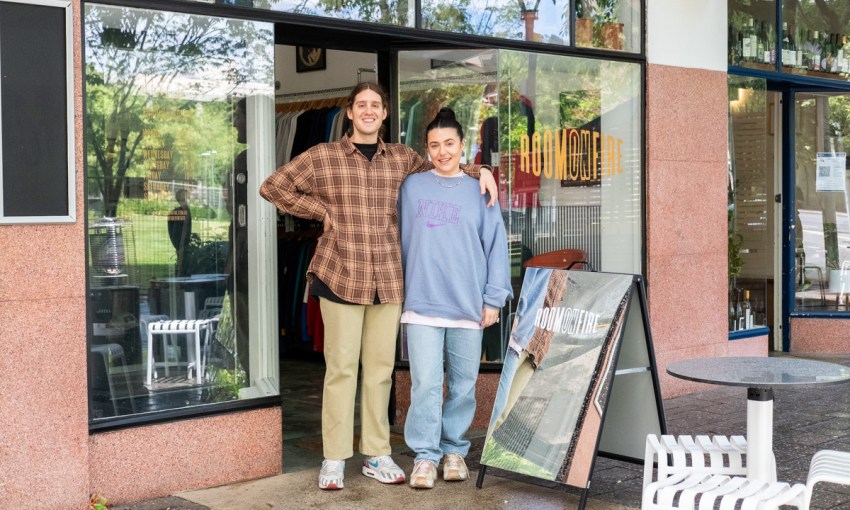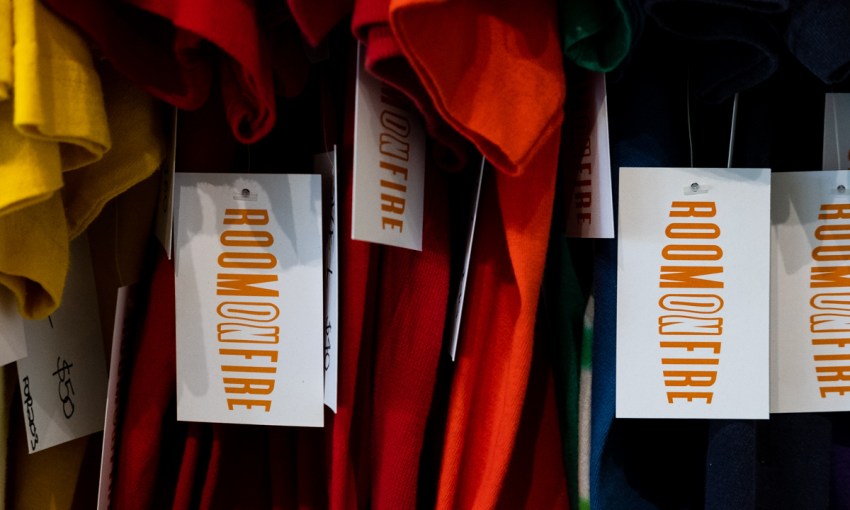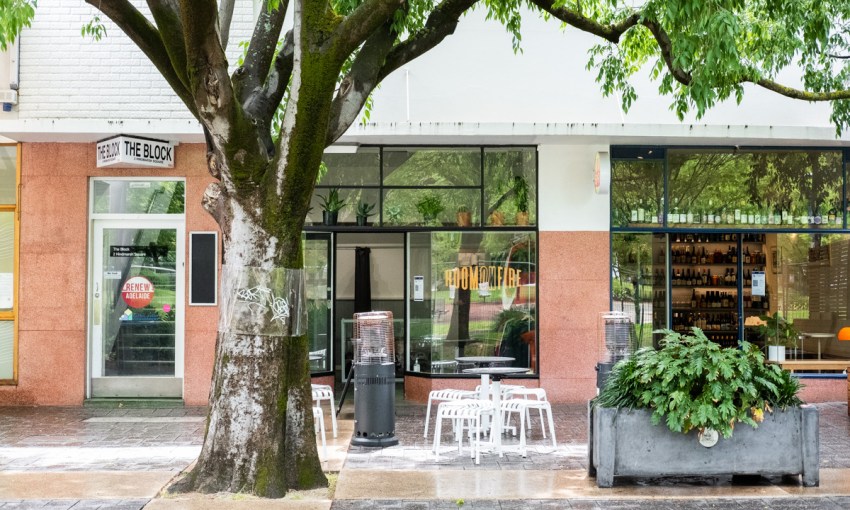Retro retailers abound in Adelaide’s thriving slow-fashion market scene, with some stallholders taking their success into bricks-and-mortar and making selling vintage their main gig.
How to make it in Adelaide’s vintage fashion market scene
Adelaide is a market mecca, with vibrant slow fashion retailers popping up throughout our city and suburbs with a key message: saving the planet looks good on you.
In recent years, slow-fashion retailers have gained popularity as consumers become more conscious of the environmental impacts of fast fashion.
For these retailers, it’s community over competition as they work towards a common goal of promoting sustainable products and maintaining their businesses.
Slow fashion consists of a variety of components, be it vintage, preloved, handmade, ethically made, upcycled or repurposed.
With a variety of social media accounts, online stores, pop-up markets and brick-and-mortar locations dedicated to slow fashion, the movement is the most accessible it’s ever been.
For Stephanie Dimasi and Reuben Lane, co-owners of Room on Fire Vintage, being involved in the scene comes from their shared passion for putting Adelaide on the map for vintage clothing.
“We bonded over how much we love vintage originally, so it made sense for us to have a store in Adelaide and make it accessible for everyone to get that kind of product,” Stephanie says.
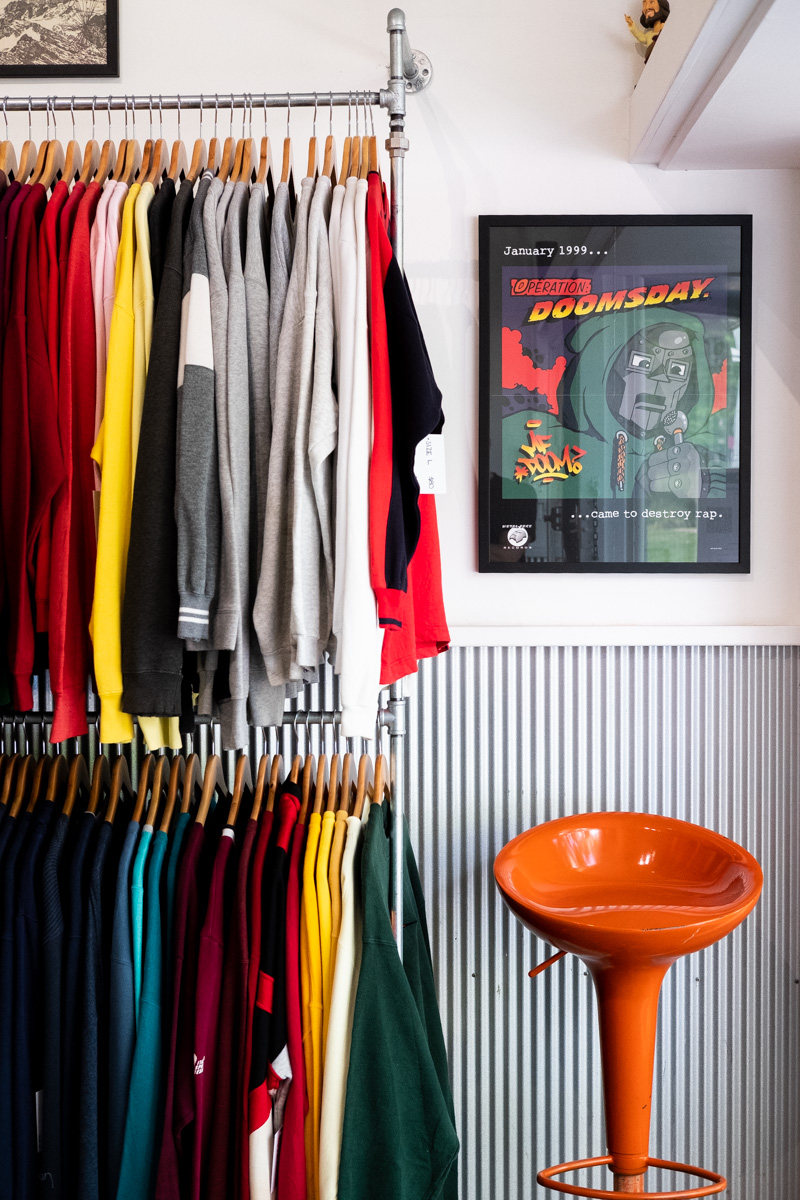
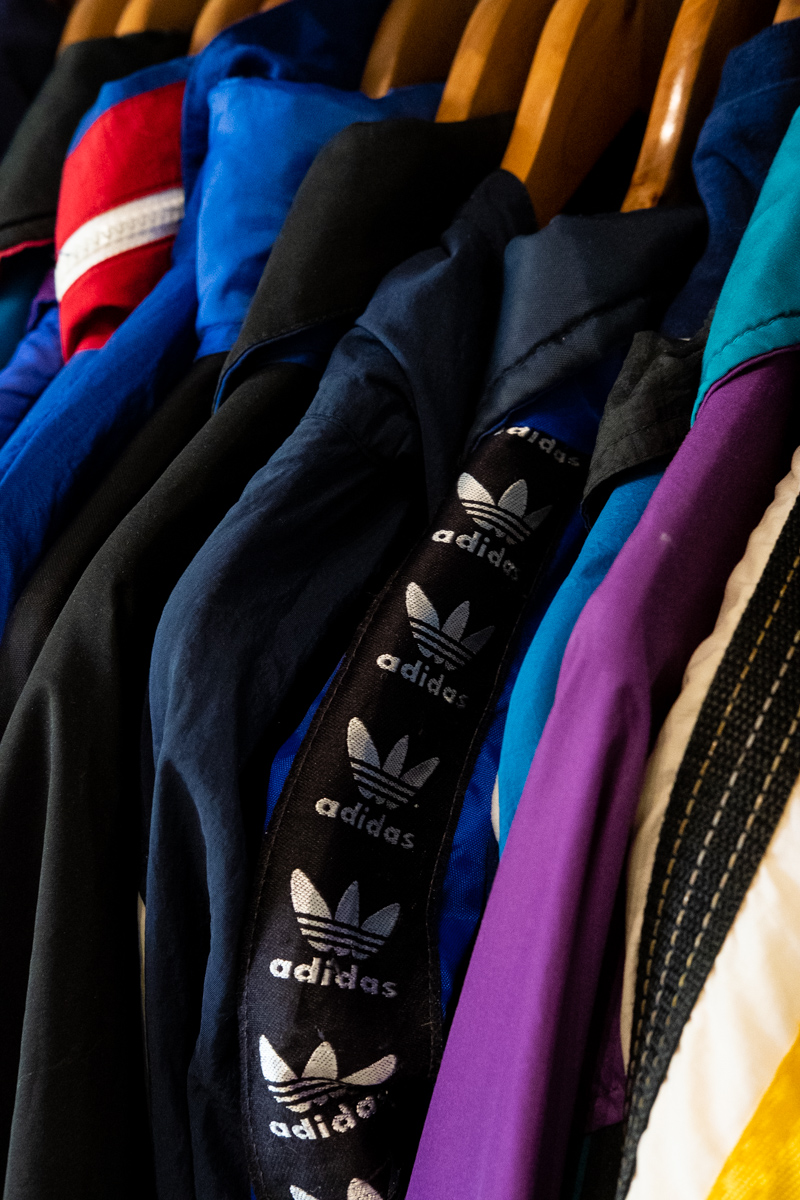
Room on Fire launched online two years ago and it now has a permanent location at 4 Hindmarsh Square, between LOC Bottle Bar & Café and the soon to be opened Dunfor Noodle Bar.
Prior to opening the store, Stephanie and Reuben took Room on Fire to markets approximately every three months to meet customers and show face within the community.
In opening their physical store, the two took the leap to become self-employed, with their prior experience working in e-commerce and retail helping them shape the business.
Stephanie and Reuben had a clear vision of how they wanted Room On Fire to succeed online and in-store, while committing to remaining affordable.
“A lot of vintage online is actually really expensive and too inflated, and we never wanted to be that brand, so we find ourselves sitting at a really affordable price bracket compared to our other online competitors and we will always stay there,” Stephanie says.
A lot of work goes into content creation and maintaining the brand across platforms.
“It’s time consuming to prep products to sell and you only have one of every item, so you have to shoot pictures of every item of inventory you have got.
“On Instagram, for example, I can’t keep milking the same picture over and over, because once it’s sold it’s done, so we’ve been working at making that more efficient.
“Social media is crazy to manage, maintain and understand; algorithms have changed 45 million times since I started, and we’re still trying to work it out.”
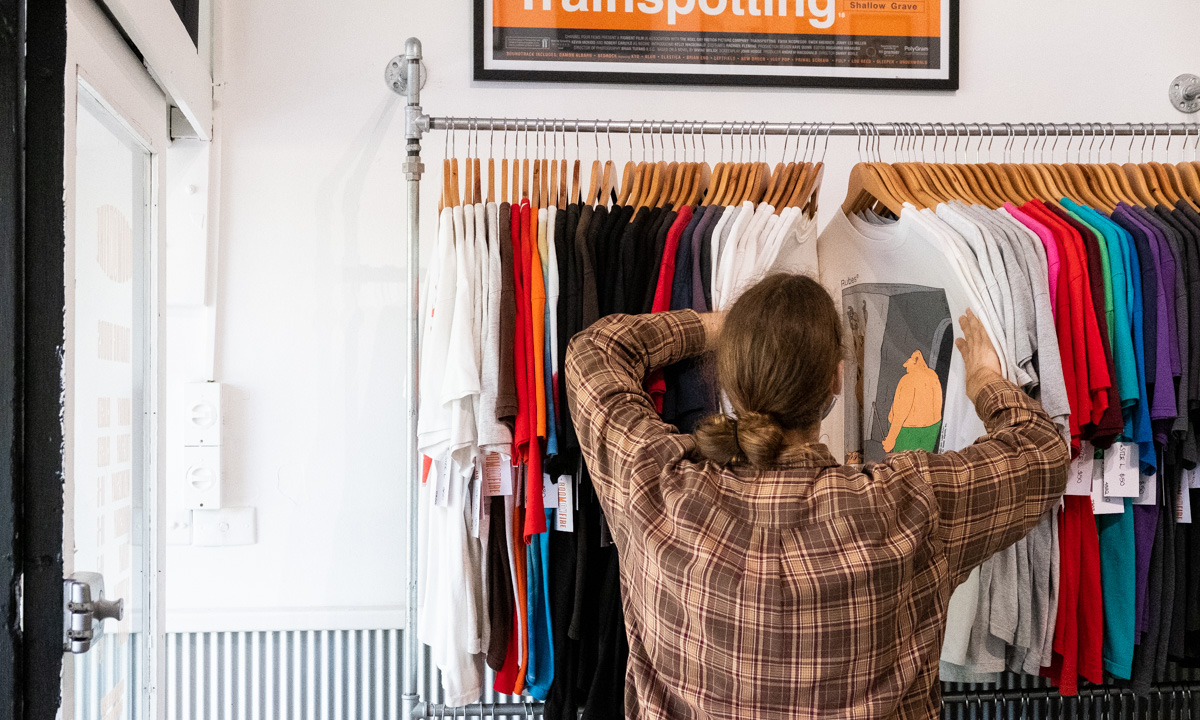
While challenging, the power of social media is certainly recognised by vintage sellers, many of whom rely on platforms like Instagram to maintain momentum outside of markets.
Anthony Beshara of Baldboy Vintage is new to the slow-fashion market scene, but has found having an online presence is crucial to owning this type of business.
“If Baldboy Vintage didn’t have an Instagram and online store it would make zero sales outside of market appearances,” Anthony says.
While Anthony would love to make Baldboy Vintage his main source of income, the business is currently a “side hustle with potential” as he learns more about the costs involved in being a stallholder and makes connections within the community.
“Appearing at markets gives the brand exposure to people that aren’t accustomed to online businesses or don’t frequent social media,” Anthony says.
“I have only just started, only having done two markets, but I’m excited to look out for more.”
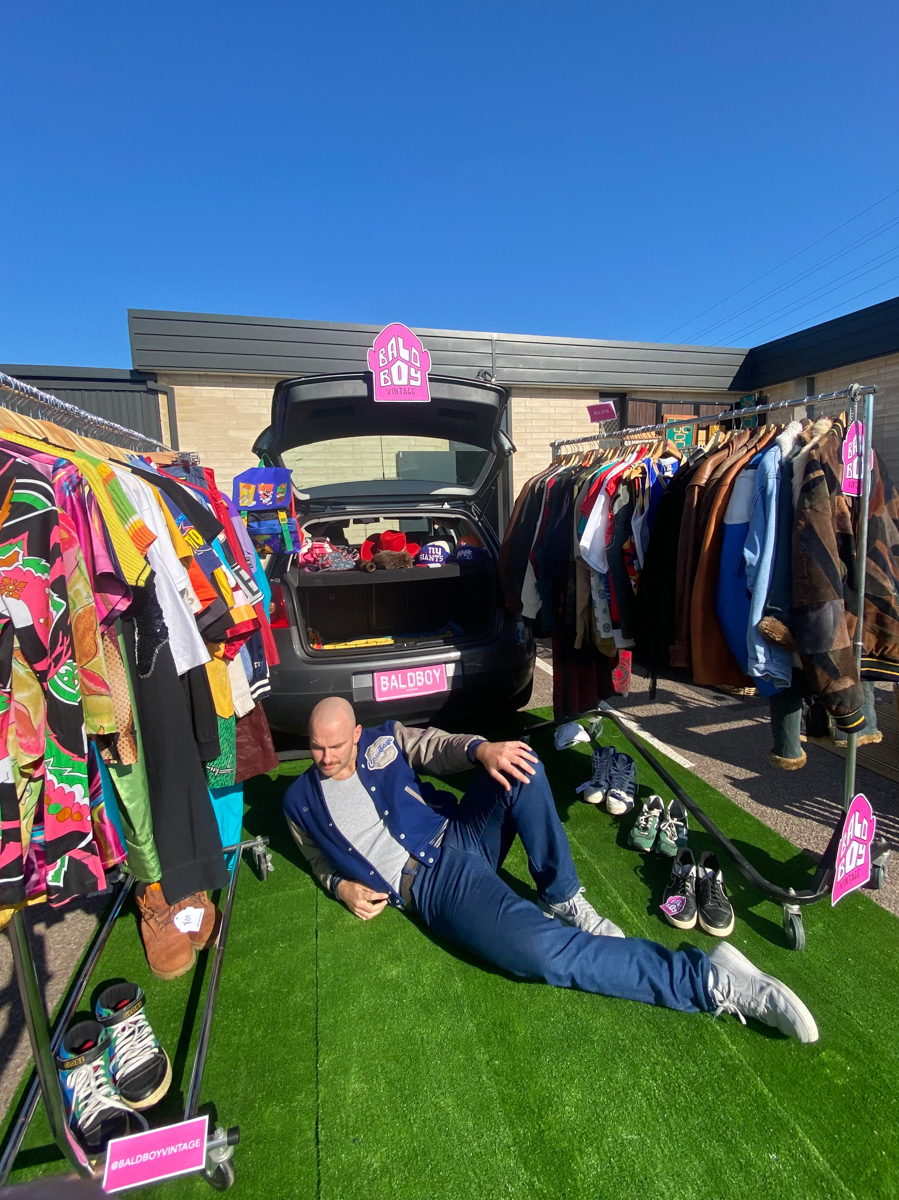
Anthony Beshara in lounge mode
With each market appearance, though, there are costs associated with operating a stall, making the early stages of business an expensive endeavour.
“Things such as clothing racks, hangers, rugs, price tags, Eftpos readers and business cards are just a start into associated costs,” Anthony says.
“Eftpos fees, postage and handling, and not to mention stallholder fees at markets have made it difficult to profit starting out.”
Louiza Hebhardt of Naked Pony Slow Fashion Emporium says markets are “probably one of the best things you can do to get yourself out there”, but they can be hit and miss.
She has been involved in the industry for three years now, with Naked Pony being her main source of income. This year, she worked in the Garden of Unearthly Delights during Fringe, at Glenelg’s Alpine Winter Festival, and she’s a regular attendee at Gilles at the Grounds.
“I put my hat in the ring for most events close to me, and I see how they go and if they end up being worthwhile,” she says.
“It might be that even if I don’t necessarily make a lot of sales, there might be a lot of people there, so in terms of promotion, advertising and exposure, I will consider that when I work out what I’m going to do.”
Both Naked Pony and Baldboy Vintage were involved in Slow Fashion September, which Louiza organised as a month-long celebration of sustainability to unite the community and advocate for equitable opportunities and conscious consumption.
While Naked Pony is her regular work, Slow Fashion September was founded as a social enterprise to showcase the strong culture of the slow fashion community and embrace business owners, many of whom work collaboratively.
“When I ask stallholders how they got into this, many say it was kind of by accident. It is almost like the experience just takes on a force of its own, and before people realise, they are in the thick of this scene,” Louiza explains.
“They make enough money from it, it’s an enjoyable experience and I feel like it’s a worthwhile endeavour in a supportive and collaborative community; these are things that keep people going in this space.
“Certainly, from my perspective it’s not about making millions but about supporting each other, so by the end of the month there’s a few hundred or couple of thousand dollars we wouldn’t have had at the start of the month.”

Louiza Hebhardt
Louiza, who has a background in teaching and domestic violence counselling, says this helps to reduce financial stressors, which has an impact on the mental health outcomes of stallholders, many of whom are women.
More so, markets provide a way to get consumers thinking about the weight of their transactions through what Louiza refers to as “covert activism”.
“When I began Naked Pony, I had no idea about the environmental impact the fashion industry has… I hadn’t made that connection,” Louiza says.
“I was shocked, and I think that’s a fairly common response. And then my thinking is that I am in a position of power here, I can choose how I consume and who that is going to benefit, and one of my objectives is to educate.
“I’ll have an exchange over a transaction and I’m like, ‘Did you know…’ and dropping these facts for people to think about and hopefully investigate further in their own time.
“Even since I began working in this space there has been a real shift… People are looking for different ways to express their identity, because that’s what clothing does, and to do it in a way that is often cheaper than buying from mainstream department stores, as people are becoming more conscious as consumers.”



